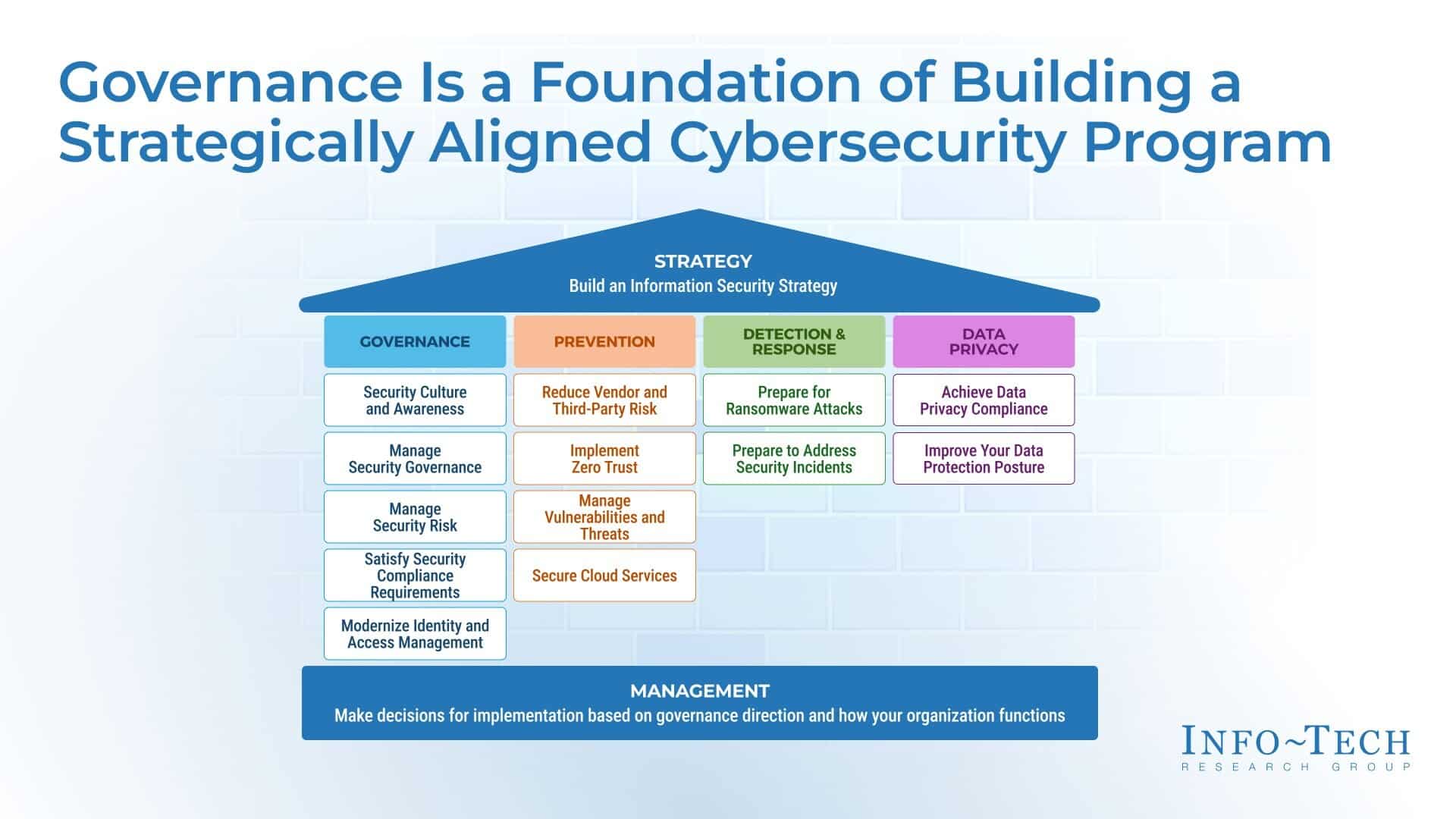Here is the translation of your text into American English:
—
The increasing number of cyberattacks targeting critical government infrastructures has highlighted the need for more effective and collaborative strategies in cybersecurityCybersecurity solutions are essential in the digital age…. In response to this challenge, Info-Tech Research Group has launched its comprehensive cybersecurity governance framework for governments. This approach, called “Whole-of-Government Cybersecurity Governance,” aims to align responsibilities, minimize inefficiencies, and protect systems against advanced threats, promoting stronger interdepartmental collaboration.
Governance as the Foundation for Strategic Cybersecurity
Neal Rosenblatt, Principal Research Director at Info-Tech, emphasizes that effective governance is critical for building a strategically aligned cybersecurity program. However, he notes that implementing comprehensive security is a challenge, comparable to trying to make a building completely fireproof. With clearly defined roles, interdepartmental collaboration, and well-structured policies, government organizations can achieve a balance between accessibility and resilience against emerging threats.
According to the report, the lack of coordination and standardized practices within fragmented government structures amplifies vulnerabilities to cyberattacks. By adopting a comprehensive approach, government agencies can optimize resources, prioritize risks, and enhance the overall resilience of their digital infrastructure.
Key Elements of the Cybersecurity Governance Framework
The Info-Tech framework establishes five essential pillars for effective governance:
- Foster Collaboration: Encourage communication between departments to align cybersecurity objectives with overall government goals.
- Increase Accountability: Define clear roles and responsibilities to ensure oversight across all operational levels.
- Holistic Risk Management: Develop practices that consider interconnected risks within infrastructures, systems, and external dependencies.
- Standardize Policies and Practices: Reduce fragmentation by establishing consistent policies that allow for scalability.
- Develop Capabilities: Invest in training and knowledge sharing to address cybersecurity skills gaps.
Phased Approach to Implementation
The report proposes a two-phased approach for governments to implement cybersecurity governance structures:
- Phase 1: Design the cybersecurity governance model.
- Establish clear structures, roles, and accountability measures.
- Create foundational policies and frameworks that align efforts among government entities.
- Phase 2: Implement essential cybersecurity governance processes.
- Operationalize the frameworks with scalable processes.
- Align cybersecurity efforts with overall government objectives to ensure consistency and effectiveness.
Benefits of a Comprehensive Approach
Adopting a comprehensive governance model allows government agencies to strengthen public trust, ensure regulatory compliance, and proactively address emerging threats. Additionally, it fosters more effective collaboration among agencies and provides a foundation for secure and resilient digital governance in the future.
The Info-Tech framework is not only a tool to address current challenges but also a step towards protecting critical data and infrastructure in an increasingly complex digital landscape. This comprehensive approach redefines cybersecurity as a coordinated and collective effort, positioning governments to face future threats more robustly.
via: Infotech

